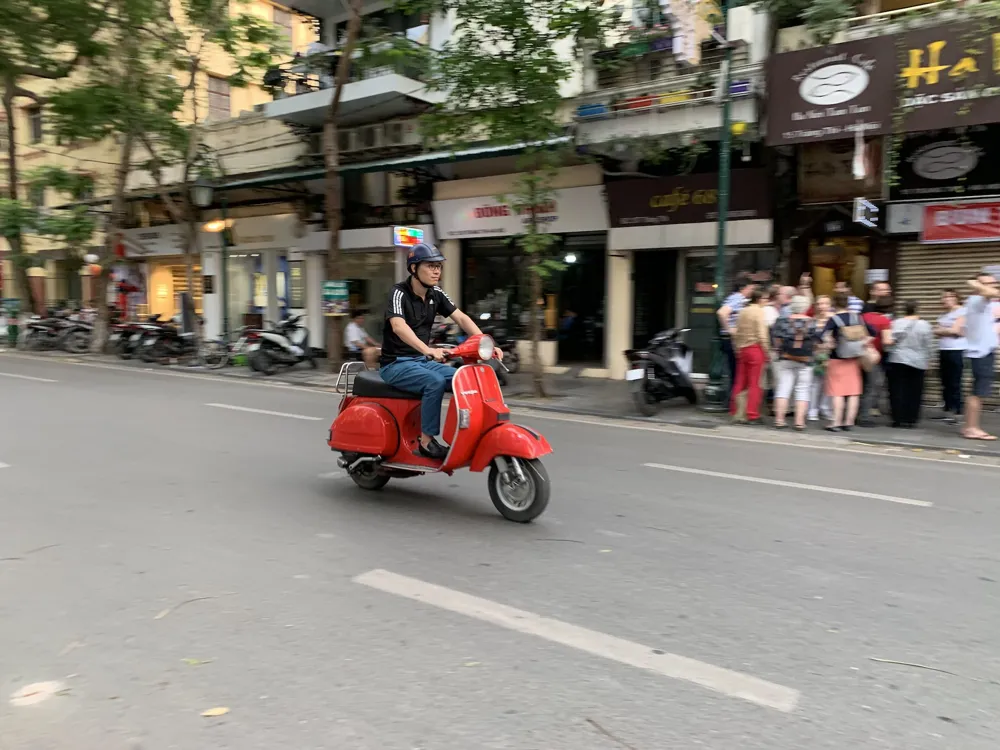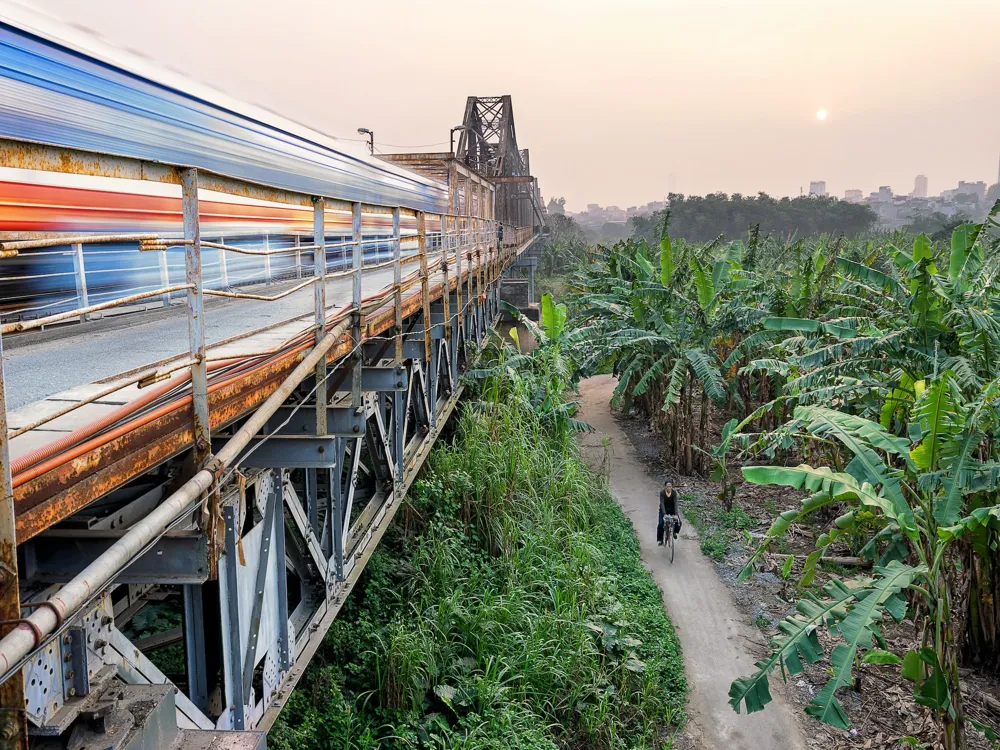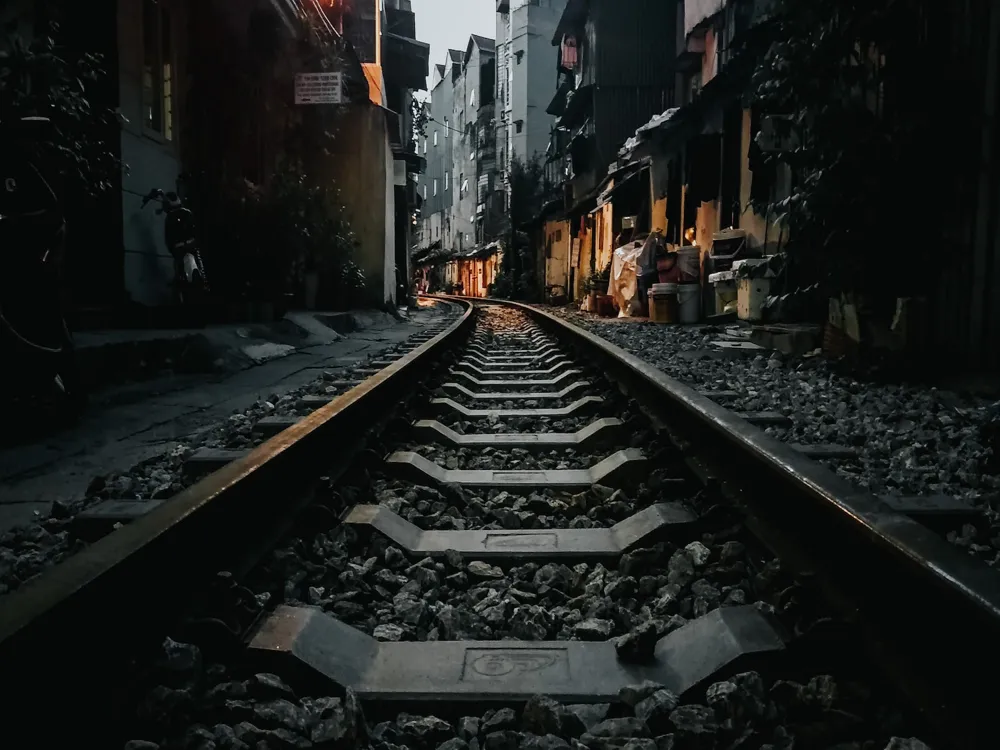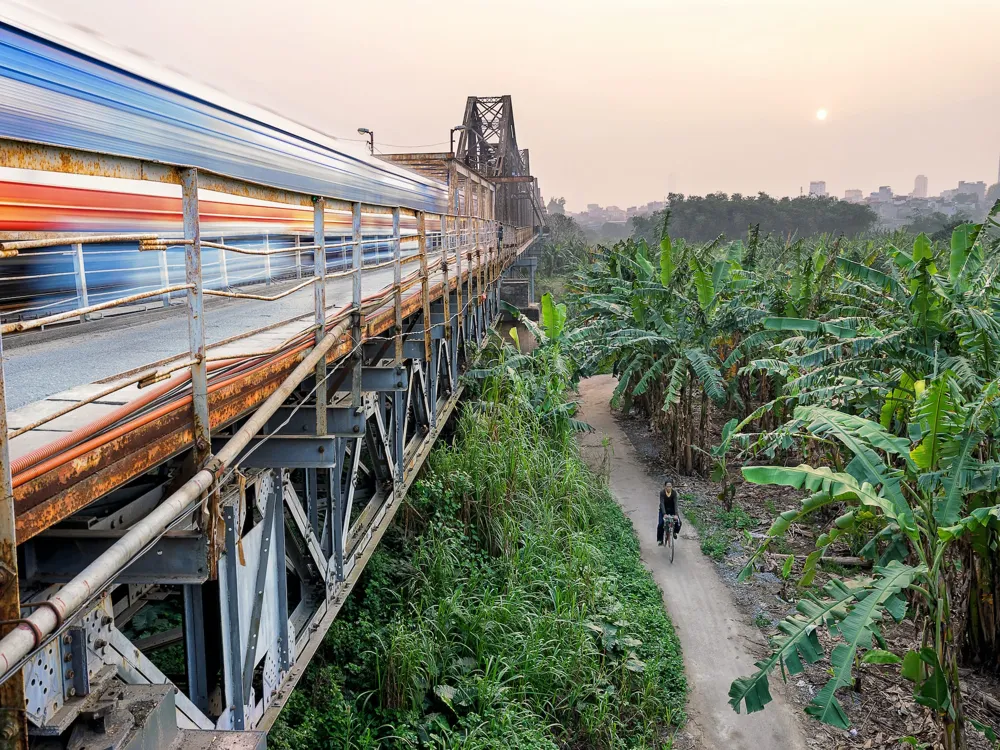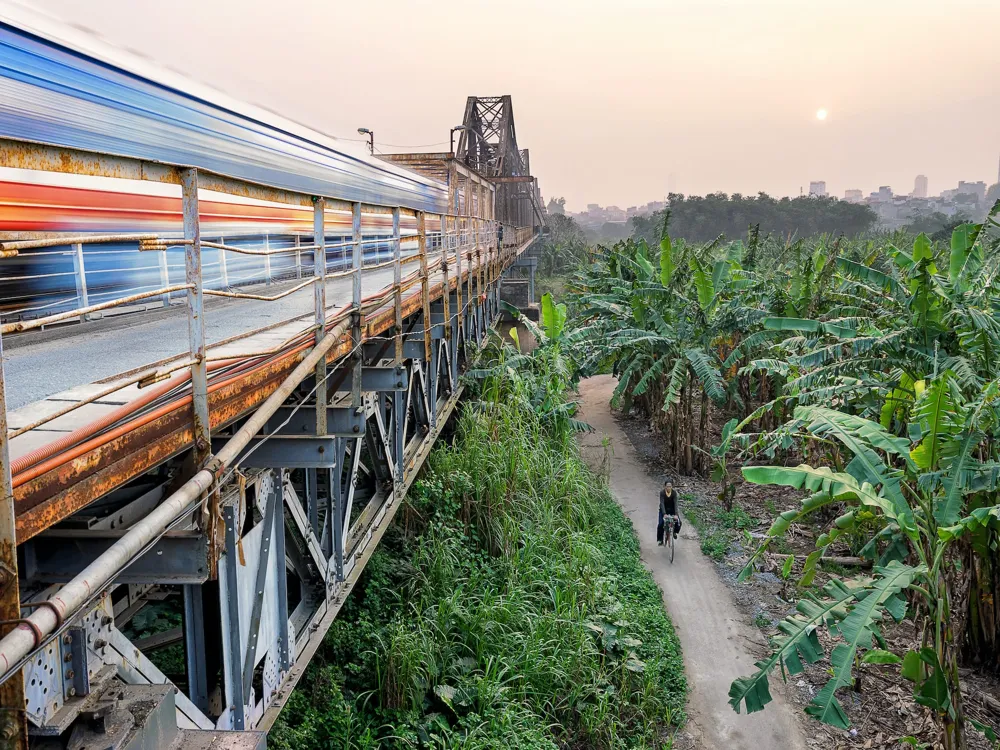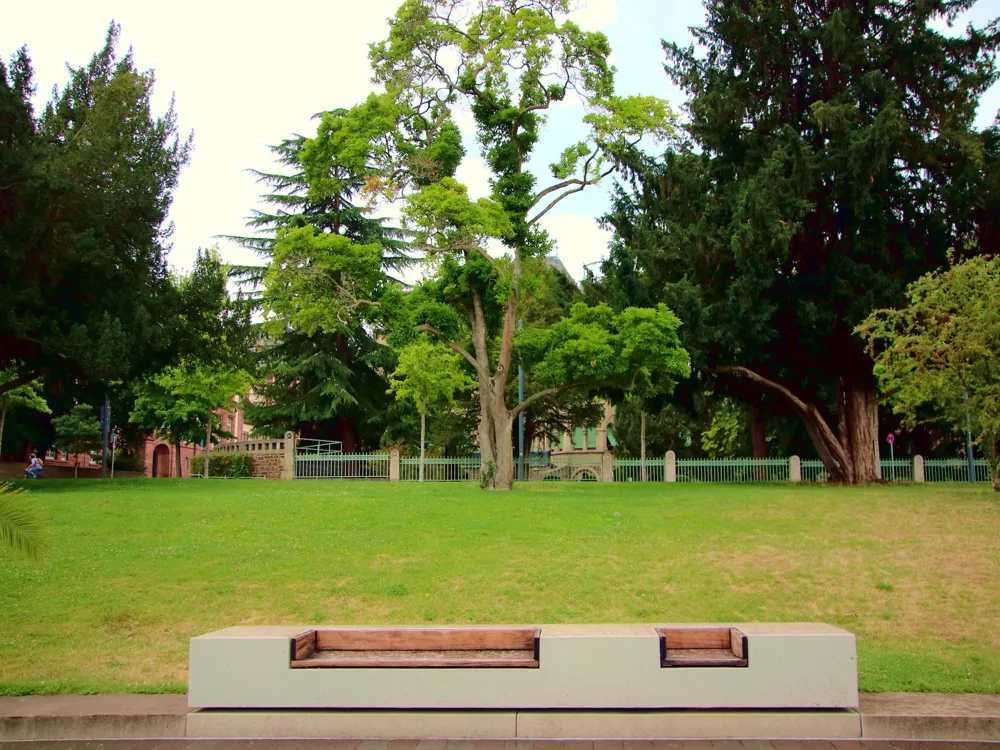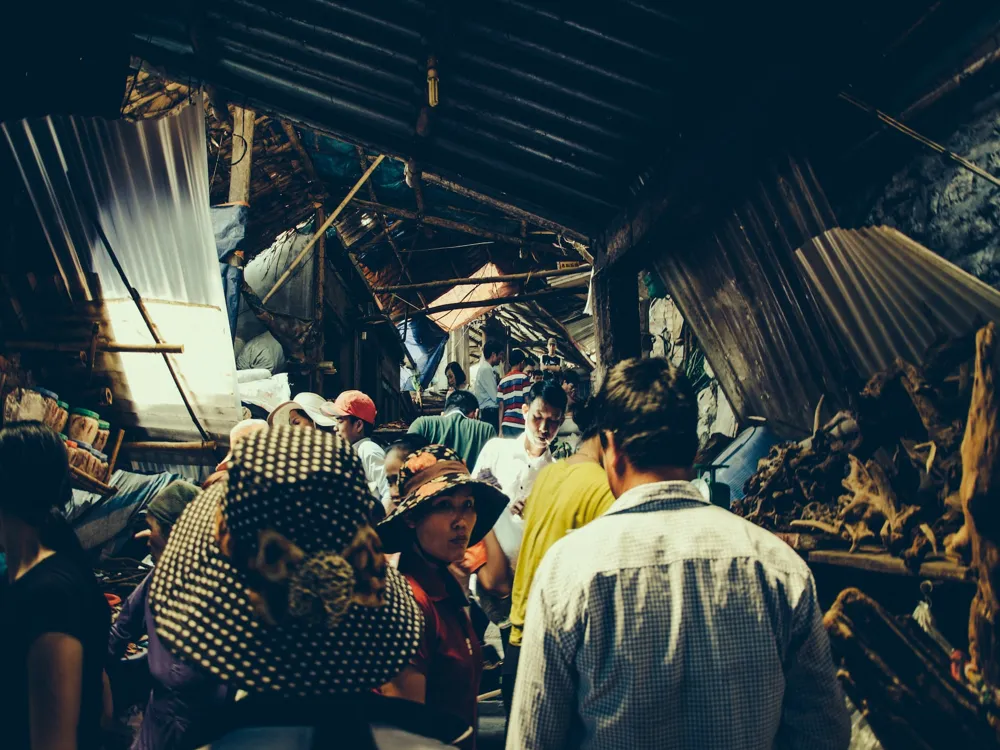The Flag Tower of Hanoi, a symbol of the city and a remarkable historical monument, stands as a testament to Vietnam's rich cultural and architectural heritage. Erected in 1812 during the Nguyen Dynasty, this imposing structure has witnessed many significant events in Vietnamese history. The Tower, part of the Hanoi Citadel, a World Heritage Site, is not just a tourist attraction but also a symbol of national pride and resilience. With its unique blend of architectural styles, the Flag Tower of Hanoi is an epitome of the Vietnamese aesthetic sensibilities of the era. Rising to a height of 33.4 meters (about 110 feet), it is a three-tiered tower topped with a pyramidal roof. The tower is a harmonious blend of traditional Vietnamese architectural elements with influences from French colonial design, reflecting the historical periods it has endured. Each level of the tower is marked by vibrant bands of red and yellow, colors that hold profound significance in Vietnamese culture, symbolizing prosperity and power. One of the most striking features of the Flag Tower is its stability and endurance. Despite the numerous wars and conflicts that have shaken Hanoi, the tower has remained largely intact, serving as a resilient symbol of the nation. It's a living piece of history that tells the story of Vietnam's past, from its early days of feudal rule to its struggles for independence and modern development. Visitors to the Flag Tower can immerse themselves in this rich historical tapestry and gain a deeper understanding of Vietnam's journey through the ages. Furthermore, the Flag Tower's position in the heart of Hanoi makes it a central landmark, easily accessible and visible from various parts of the city. Its strategic location and height have historically made it an ideal spot for flying the national flag, hence its name. Today, it continues to be an essential part of national ceremonies and a focal point for cultural events. The Flag Tower is not just a monument; it's a living part of Hanoi, continuing to inspire and unite its people. ... The Flag Tower of Hanoi, an architectural marvel, is a fine example of the fusion of Vietnamese design principles with foreign influences. The Tower's structure, materials, and decorative elements reflect a period in Vietnamese history where tradition met modernity. Each aspect of its design has a story to tell, contributing to the overall significance and beauty of the monument. Standing on a square-shaped base, the Flag Tower spans over an area of nearly 400 square meters. The first level of the tower is the largest, measuring 42.5 meters in circumference and about 3.1 meters in height. This level represents the solid foundation of Vietnamese culture and strength. The intricate carvings and motifs on the walls of this tier depict traditional Vietnamese symbols and legends, providing insight into the nation's rich folklore and artistic traditions. As we ascend to the second level, the circumference decreases to 27 meters, symbolizing the rise towards enlightenment and higher knowledge. This tier features a series of arched doorways and windows, blending Vietnamese architectural aesthetics with French colonial influences. The windows are designed to allow light to penetrate the interior, creating a play of light and shadow that adds to the mystical ambiance of the structure. The third and final level, reaching a height of 2.3 meters, is a representation of the unity and aspiration of the Vietnamese people. This tier is less ornate, focusing more on the function of supporting the flagpole. The flagpole itself, rising majestically above the tower, is a symbol of the nation's soaring spirit and independence. ... Visiting the Flag Tower during the early morning or late afternoon is ideal to avoid the midday heat. The lighting during these times is perfect for photography, and the overall experience is more pleasant. It's important to dress respectfully when visiting the Flag Tower, as it is a site of national significance. Comfortable walking shoes are recommended, as there is a fair amount of walking and climbing involved. Consider taking a guided tour to gain deeper insights into the history and architecture of the Flag Tower. Knowledgeable guides can provide fascinating details and stories that are not widely known. For photography enthusiasts, the Flag Tower offers numerous stunning angles and perspectives. Experiment with different viewpoints and times of the day to capture the tower's beauty. After visiting the Flag Tower, explore nearby attractions like the Imperial Citadel of Thang Long, Hoan Kiem Lake, and the Old Quarter to enrich your Hanoi experience. The Flag Tower of Hanoi is centrally located and easily accessible by various modes of transportation. For those staying in the city center, walking or cycling can be a pleasant way to reach the Tower, allowing you to experience the vibrant streets of Hanoi. Alternatively, public buses and taxis are readily available and provide a convenient means of transportation. For international visitors, the Noi Bai International Airport is the nearest airport, and from there, one can take a taxi or an airport shuttle to reach the city center and the Flag Tower. ...Overview of Flag Tower of Hanoi
Architecture of Flag Tower
Tips When Visiting Flag Tower
Best Time to Visit
Dress Code and Etiquette
Guided Tours
Photography Tips
Nearby Attractions
How To Reach Flag Tower
Flag Tower
Hanoi
₹ 15,260 onwards
View hanoi Packages
Hanoi Travel Packages
View All Packages For Hanoi
Top Hotel Collections for Hanoi

Private Pool

Luxury Hotels

5-Star Hotels

Pet Friendly
Top Hotels Near Hanoi
Other Top Ranking Places In Hanoi
View All Places To Visit In hanoi
View hanoi Packages
Hanoi Travel Packages
View All Packages For Hanoi
Top Hotel Collections for Hanoi

Private Pool

Luxury Hotels

5-Star Hotels

Pet Friendly







